DHR Locomotives
Adapted from compilation by Terry Martin and David Churchill
Working the DHR, with its sharp curves, severe gradients and long stretches of uphill running is a very challenging task requiring a very special locomotive. The 'B' Class steam locomotives still in service were introduced in 1889 and have not changed a great deal since as they are particularly well adapted to the line.
'Tiny' was one of the diminutive locos used by the contractor constructing DHR.

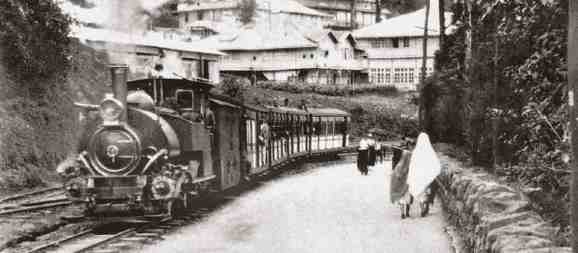
'1' Class steam locomotives
The first locomotives for DHR were the eight No. 1 Class built in 1880 by Sharp Stewart in the UK. They proved barely capable of working the line, which was constructed with much steeper gradients and sharper curves than specified.
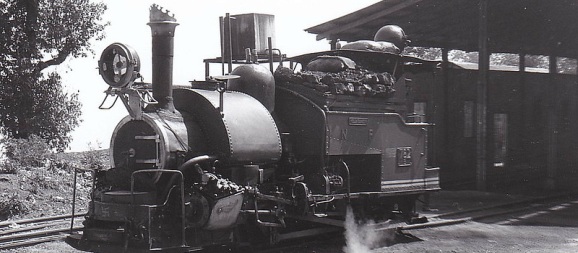
'A' Class steam locomotives
A rapid reassessment must have followed and in 1882 Sharp Stewart delivered a radically changed design, first called the No. 2 Class, later renamed as 'A' Class. This was much better suited to the DHR, being more powerful whilst keeping the short wheelbase needed to negotiate curves. Having water in a well tank between the frames gave a lower centre of gravity, outside Walschaerts valve gear was more accessible, and a larger boiler produced more steam. Before long a small saddle tank was added (more water and better 'balance') plus a bunker in front of the cab (more coal). This gave an outline which looked recognisably similar to that of the later 'B' Class. The frames and wheels of one of the 'A' Class locos is still at Tindharia – having been found under a rubbish tip in Siliguri.
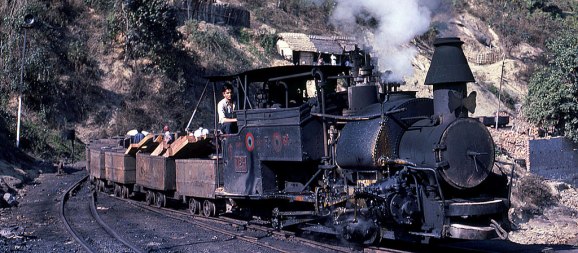
'B' Class steam locomotives
When increasing traffic required still stronger locomotives, improved track and civil engineering permitted a heavier design with longer wheelbase. Sharp Stewart produced a longer, more powerful locomotive although still with the same distinctive arrangement - well tank plus saddle tank, outside valve gear, long boiler and bunker in front of the cab. The first were delivered in 1889, initially called No. 3 Class, but soon renamed 'B' Class, as they have been known ever since. The design proved very successful, with further batches being built until 1927 - a total of 34, built by Sharp Steward, North British, Balswin and Tindharia, eventually serving on DHR. The design did not change much over time, although details were gradually improved. Two further locos were assembled at Indian Railways' Golden Rock workshop in 2003/04 using some parts from other withdrawn 'B' Class.
Four 'B' Class were scrapped in 1952 with further examples being withdrawn as traffic declined. However, 14 still remain in the DHR stock list in 2016. Working survivors elsewhere include two of the four sold to Tipong Colliery in Assam, 19B returned to the UK via the USA and, theoretically, 794B transferred to the Neral Matheran Railway. Many others are 'plinthed' at museums and railway stations around India.

'C' Class steam locomotives
As a complete contrast to the compact 'B' Class, DHR ordered 2 'Pacific' type tender locomotives (with 4-6-2 wheel arrangement) from the North British Locomotive Company in the UK in 1914 for use on the long line from Siliguri to Kishanganj. Once this closed there was little work for them; but both have been preserved in India.
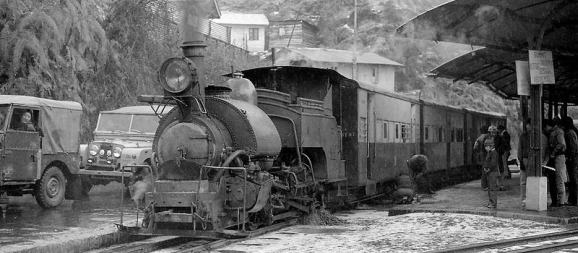
'D' Class steam locomotives
In an attempt to haul longer trains on the heavily graded line up to Darjeeling, DHR purchased an experimental Garratt-type articulated double locomotive with two sets of coupled wheels powered from a single large boiler. It is said that the loco worked well - but was actually too powerful for the hill section since longer trains of wagons tended to derail on the sharp curves of the complete loops. It was scrapped in 1954.
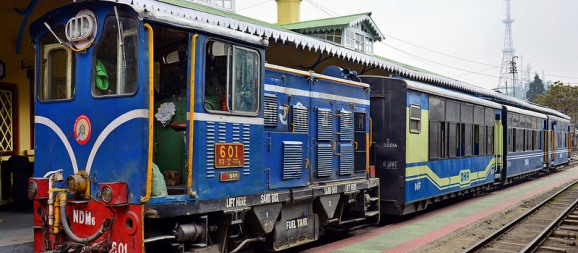
'NDM6' Class diesel locomotives
Over the years the DHR, and later Indian Railways, considered replacing the 'B' Class with a modern alternative. None succeeded until two 'NDM6' Class diesel locos from SAN Engineering of Bangalore were introduced in 2000. They have been supplemented by another pair transferred from Matheran in 2006 and two more examples in 2016. These have proved successful and now operate almost all the timetabled through services plus some of the 'Joy Trains', leaving the steam locos largely to the 'tourist' and charter services.
Tindharia Workshop
DHR's Tindharia Workshop was built in 1914/15 to cope with maintaining, and even building, the increasing numbers of locomotives, coaches and wagons. It replaced the cramped facilities around Tindharia loco shed.
The stationary steam engine under the chimney of the Power House not only powered the belt-driven machinery in the workshops but also generated electricity for the whole town.
Tindharia is now the only full time workshop for steam locos in India - and one of very few left in the World where they are completely dismantled, overhauled and rebuilt every 4 years.

Director / DHR
Elysia Place
Kurseong, Dist. Darjeeling
West Bengal, India - 734 203
Email:
dhroffice.kurseong@gmail.com
director.dhr@gmail.com
Director / DHR
Camp Office, Siliguri NG LOCO Shed
P.O. Pradhan Nagar
Siliguri Jn, Dist - Darjeeling
West Bengal, India-734003
Email:
dhroffice.kurseong@gmail.com
director.dhr@gmail.com
Website Design and Development Service Provided By Techno Developers Group
